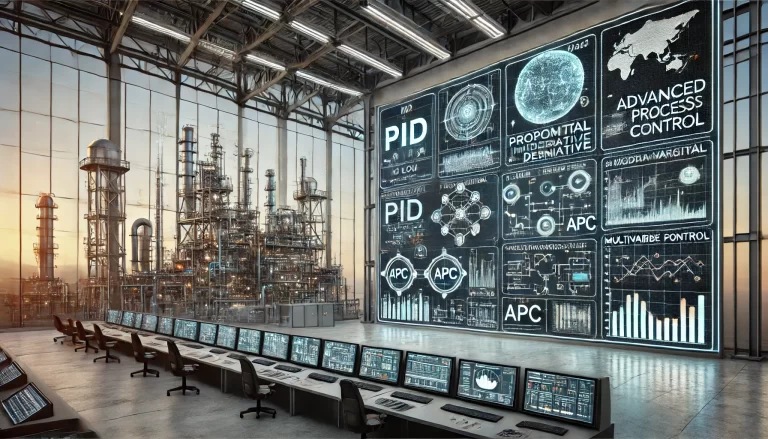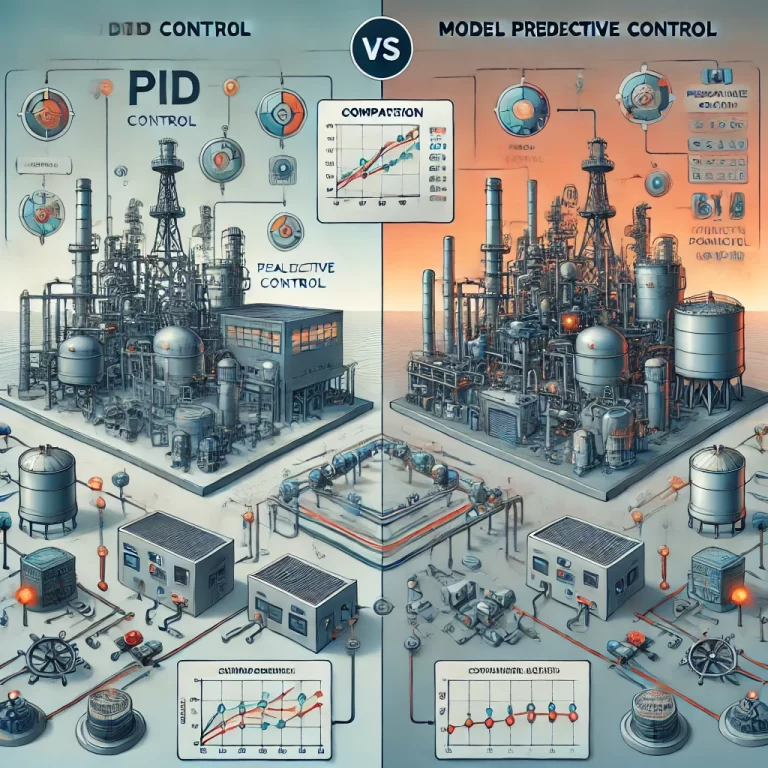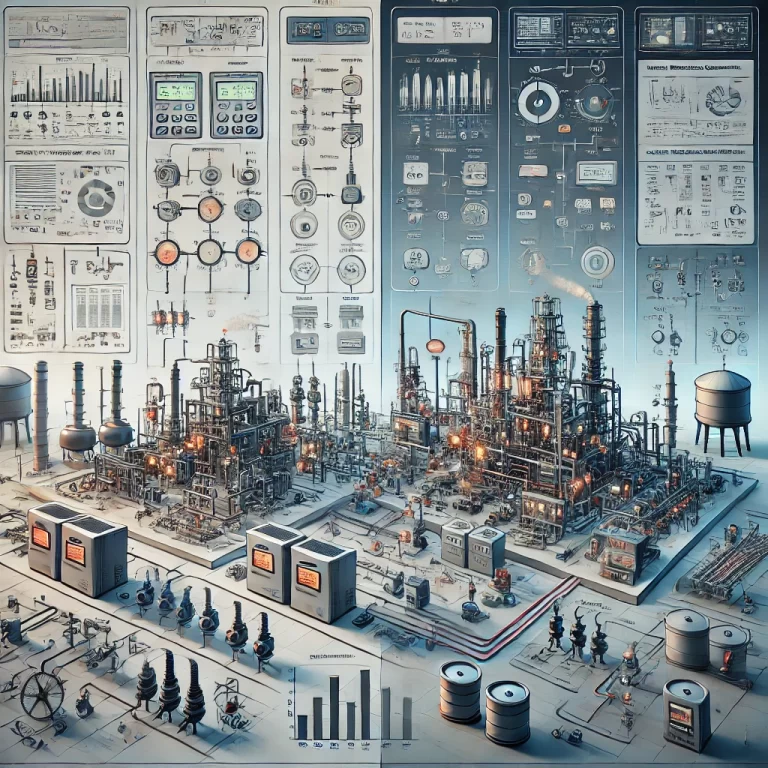As industrial automation systems grow increasingly complex, traditional PID controllers—though reliable and widely used—are no longer sufficient for meeting the rising demands of precision, safety, and efficiency. This has led many process industries, especially petrochemical plants, to explore advanced control strategies like Model Predictive Control (MPC).
But does MPC always outperform PID? What are the trade-offs? And how should engineers choose the right control method for their systems?
This article compares PID and MPC from the perspectives of principle, performance, application scenarios, and implementation cost.

1. PID Control: The Industrial Workhorse
PID control (Proportional–Integral–Derivative) is a foundational algorithm in the field of industrial automation. Due to its simplicity, ease of implementation, and fast response, PID controllers have been widely adopted in countless process control systems around the world.
✅ Strengths of PID:
Simple to implement
Well-understood tuning methods
Effective in single-variable, low-delay systems
Low cost and minimal computational requirements
❌ Limitations of PID:
Poor performance in systems with long time delays or strong nonlinearities
Not well-suited for multivariable or coupled systems
Tuning becomes complex and error-prone in systems with multiple control loops
Example:
In a basic heating system with a single temperature sensor and heater, a PID controller can maintain the setpoint accurately. But in a distillation column with multiple interacting variables, PID may fail to deliver optimal performance.

2. Model Predictive Control (MPC): The Flagship of Advanced Control
Model Predictive Control (MPC) is one of the most widely used advanced control methods. It leverages a mathematical model of the process and real-time optimization algorithms to predict future behavior and adjust control actions accordingly.
✅ Key Advantages of MPC:
Handles multivariable systems with constraints
MPC can optimize across several inputs and outputs simultaneously, taking into account interactions between variables.Real-time prediction and optimization
It continuously forecasts future system behavior and adjusts control inputs to minimize deviations from target trajectories.High flexibility
Setpoints and operating constraints can be updated on-the-fly, making MPC adaptable to changing production conditions.
❌ Challenges with MPC:
High dependency on accurate process models
Requires significant computing power
Higher implementation and maintenance costs
Steep learning curve for engineers
Example:
In a fluid catalytic cracking (FCC) unit, MPC can simultaneously optimize multiple control loops—such as feed rate, catalyst flow, and reactor temperature—while satisfying safety and product quality constraints.

3. MPC vs. PID: Side-by-Side Comparison
| Feature | PID Control | Model Predictive Control (MPC) |
|---|---|---|
| Control Scope | Single-input, single-output (SISO) | Multi-input, multi-output (MIMO) |
| Implementation Complexity | Low | High |
| Tuning Difficulty | Medium (rules-based) | High (model-based) |
| Computational Demand | Minimal | High |
| Cost | Low | High |
| Response to Constraints | Limited | Built-in handling |
| Flexibility | Low (static structure) | High (dynamic optimization) |
| Use Case | Simple systems with low interactions | Complex systems with strong coupling |
4. How to Choose the Right Strategy?
There is no one-size-fits-all answer. Your choice should depend on:
System complexity:
Use PID for simple, linear systems. Use MPC for multivariable, nonlinear, or high-delay processes.Performance requirements:
If your plant requires strict control of multiple outputs (e.g., energy efficiency, product yield), MPC may be worth the investment.Budget and infrastructure:
Consider the availability of computational resources, modeling expertise, and DCS integration capabilities.Operational flexibility:
For frequently changing setpoints or constraints, MPC offers better adaptability.

5. Real-World Implementation Challenges
Despite its advantages, MPC is not always the default choice. Real-world limitations include:
Legacy DCS systems that are difficult to modify
Lack of accurate process models for certain operations
Limited support staff with expertise in advanced control
High costs associated with modeling, deployment, and maintenance
In many industries, engineers prefer to stick with PID control for stability and ease of troubleshooting. Especially in emergency scenarios, the maturity and transparency of PID logic often allow for quicker diagnostics and recovery.

6. Final Thoughts: No Silver Bullet—Only Smart Choices
Advanced control does not necessarily mean better control in all situations. While MPC shines in large-scale, high-precision, dynamic environments, PID remains invaluable for simplicity, cost-efficiency, and reliability.
The key to successful automation lies in making informed decisions based on system requirements, operational goals, and available resources.
In the future, as computational capabilities grow and model development becomes more automated, hybrid systems combining PID with MPC or AI-based optimization may become mainstream.
Until then, smart engineering lies in choosing the right tool for the job—not just the most advanced one.
